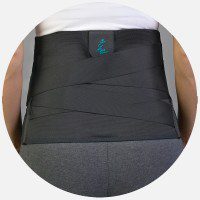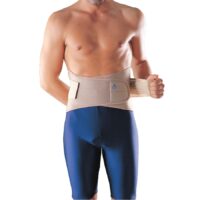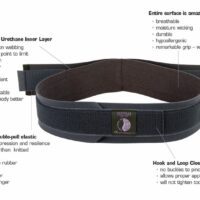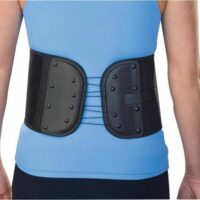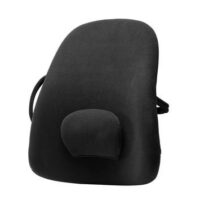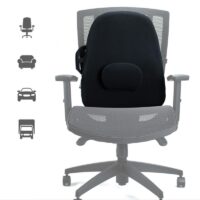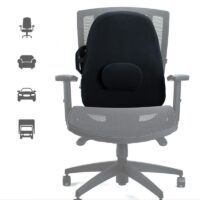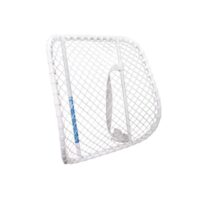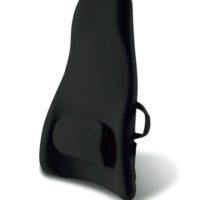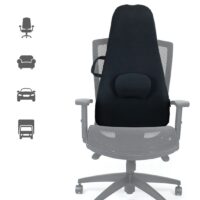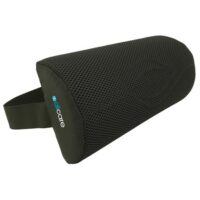Pulled Back Muscle
Article by John Miller

Pulled Back Muscle
How to Quickly Overcome Back Muscle Pain
Back muscle pain, commonly referred to as a pulled back muscle, affects numerous individuals, making it a prevalent source of discomfort. However, it’s also one of the conditions that respond well to treatment and rehabilitation, promising a swift recovery for those affected.
What Causes Back Muscle Pain?
The reasons behind back muscle pain are diverse, ranging from muscle fatigue and excessive loads to awkward lifting and poor postures. These factors contribute to the weakening or overstraining of back muscles, leading to discomfort and, in some cases, severe pain.
What Does a Pulled Back Muscle Feel Like?
Symptoms of a pulled back muscle include localised pain, muscle stiffness, and spasms, usually presenting a sharp pain during movement transitions. It’s crucial for individuals experiencing these signs to consult a healthcare professional for a precise diagnosis and tailored treatment plan.
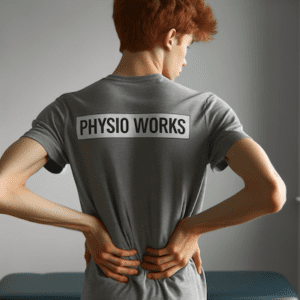
Diagnosing the Condition
Diagnosing back muscle pain involves a comprehensive assessment by a healthcare professional, such as a physiotherapist. While X-rays might not reveal muscle or ligament damage, MRI scans are more effective in identifying the extent of the injury.
What is the Fastest Way to Heal a Pulled Back?
Consulting a spinal health practitioner is a critical step towards recovery. Treatment varies significantly based on the diagnosis, but physiotherapy plays a pivotal role in the healing process. It not only alleviates pain but also focuses on restoring normal range of motion and strength, ultimately aiming to prevent recurrence.
What Helps a Pulled Back Heal Faster?
- Pain Relief & Protection: Initial treatment focuses on reducing pain through various techniques, including ice, electrotherapy, and soft tissue massage.
- Restoring Normal ROM and Strength: Rehabilitation then moves towards restoring flexibility and strength, with a focus on core stability exercises.
- Restoring Full Function: Tailored rehabilitation ensures the return to daily activities or sports, with specific goals based on individual needs.
- Preventing Recurrence: Ongoing exercises and proper posture maintenance are crucial to avoid future back pain.
How Long Does it Take for a Pulled Back Muscle to Heal?
The healing time for a pulled back muscle can vary depending on the severity of the injury and the individual’s overall health and age. Generally, minor to moderate pulled back muscles can start to feel better within a few days to a week, with significant improvement within 2 to 4 weeks. However, more severe injuries might take 6 weeks or more to heal fully.
During this time, proper care is crucial to ensure a smooth recovery. This includes following a physiotherapist’s advice, engaging in appropriate exercises, avoiding activities that may strain the back further, and possibly using treatments such as ice, heat, and over-the-counter pain relief if recommended.
It’s also important to gradually reintroduce activities and not rush back into heavy lifting or high-impact activities too soon, as this can risk re-injury. In some cases, ongoing maintenance exercises and attention to posture and ergonomic practices can help prevent future injuries.
For a tailored recovery plan and specific advice, consulting a healthcare professional or a physiotherapist is always recommended. They can assess the injury’s severity and provide a personalised treatment plan to support optimal healing.
What to Do?
If you’re suffering from a pulled back muscle, consulting a physiotherapist is vital. They can provide a professional diagnosis and a customised treatment plan to help you recover quickly and efficiently.
Related Articles
- Back Pain Treatment: Discover comprehensive approaches to managing back pain effectively.
- Sciatica: Symptoms, Causes, and Treatment: Learn about sciatica and how it relates to back muscle issues.
- Posture Correction: Understand the importance of posture in preventing back pain.
- Core Strengthening: Explore exercises to strengthen the core and support the back.
- Ergonomics: Tips on setting up your work environment to prevent back pain.
- Back Pain Relief: Readers can find strategies for easing back pain, focusing on practical and immediate relief methods.
- Understanding Muscle Strains: Offers a deeper understanding of how muscle strains occur, specifically in the back, and how to manage them.
- Preventing Back Pain: Offers advice on daily practices and exercises to maintain a healthy back and prevent muscle strains.
- Managing Chronic Back Pain: Provides strategies for managing long-term back pain, including lifestyle adjustments and therapeutic exercises.
- Heat Therapy for Muscle Pain: Discusses the benefits of heat therapy as a treatment for muscle pain, including pulled back muscles.
What Causes Lower Back Pain?
Introduction
Lower back pain is a widespread issue in Australia, stemming from diverse conditions. As physiotherapists, we often encounter various causes of this pain. This guide aims to shed light on these causes and provide valuable insights for effective management.
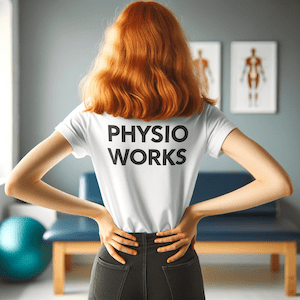

Muscle-Related Injuries
Muscle injuries are a predominant cause of lower back pain, including:
- Back Cramps and Muscle Pain: Typically resulting from overuse or strain.
- Core Stability Deficiency: Weak core muscles can lead to increased back strain.
- DOMS (Delayed Onset Muscle Soreness): Soreness affecting back muscles post-exercise.
Recent research underscores the importance of regular exercise and core strengthening in preventing these injuries.
Bone-Related Injuries
Bone health is crucial in lower back pain, encompassing conditions like:
- Spondylosis: Degenerative spine conditions.
- Spondylolysis or Stress Fracture: Common in athletes, such as cricket bowlers.
- Spondylolisthesis: Occurs when a vertebra slips over another.
- Osteoporosis: Causes bones to weaken, increasing fracture risk. Advancements in bone density scanning have improved early detection and management.
- Scheuermann’s Disease: Affects spinal bone growth in teenagers.
- Scoliosis: An abnormal curvature of the spine causing pain.
- Spinal Stenosis: A narrowing of the spinal canal leading to nerve compression.
Disc-Related Injuries
Spinal discs are vital for spinal health:
- Bulging and Disc Protrusions: These discs protrude or "slip" and can press on nerves.
- Herniated Disc: A more severe form of disc protrusion.
- Degenerative Disc Disease: Age-related disc wear and tear.
Minimally invasive surgical techniques have transformed the treatment of severe disc-related injuries where physiotherapy and other non-operative options fail to improve.
Back Joint Injuries
- Facet Joint Pain: Arises from arthritis or stress on these spinal joints.
Nerve-Related Injuries
Nerve issues can lead to:
- Nerve Pain and Pinched Nerves: Caused by spinal nerve compression from disc bulging or arthritic changes.
- Sciatica: Irritation of the sciatic nerve.
Physiotherapy and newer medications have been effective in managing these conditions. Some will require injection therapies or surgery.
Pelvis-Related Injuries
Pelvic issues also contribute to lower back pain:
- Sacroiliac Joint Pain: Involving joints connecting the spine to the pelvis.
- Piriformis Syndrome: Where the piriformis muscle irritates the sciatic nerve.
Pregnancy-Related Pain
- Pregnancy Back Pain: Often due to increased back strain during pregnancy. Prenatal physiotherapy programs are beneficial.
Systemic Diseases
Systemic diseases like Ankylosing Spondylitis, Fibromyalgia and Rheumatoid Arthritis can cause back pain.
Recent Research and Advancements
Current research emphasises a holistic approach to treating lower back pain. Techniques like yoga and Pilates, alongside traditional physiotherapy, and conservatively progressed gym programs show significant relief. The role of diet in managing weight and inflammation is increasingly recognised.
Best Treatments for Lower Back Pain
Treatment varies but often includes:
- Physiotherapy
- Pain management
- Strength and flexibility exercise programs
- Ergonomic adjustments
- Surgical interventions for severe cases
Conclusion
Lower back pain is a significant health concern in Australia. Understanding its causes and seeking professional physiotherapy advice can greatly improve life quality. Remember, early intervention is key for an effective recovery.
What to Do?
If you're experiencing lower back pain, it's vital to consult a physiotherapist or doctor. They can provide an assessment and customised treatment plan based on your specific condition.
Back Pain FAQs & Products
Your Comprehensive Guide to FAQs, Causes, and Relief
Experiencing back pain and looking for answers? Our comprehensive FAQ section covers everything you need to know about back pain - from common causes and symptoms to effective treatments.
Click the links to our detailed articles to understand better and manage your back pain. Explore links to related topics like 'Severe Back Pain Management', 'Posture Improvement Techniques', and 'Physiotherapy for Chronic Back Issues' for a holistic approach to your spinal health."
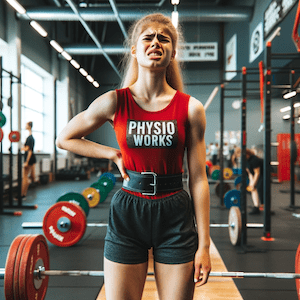

What Causes Back Pain?
Discover the various factors behind back pain, including muscle strains, herniated discs, and more.
- Most Common Causes of Back Pain
- Causes of Lower Back Pain
- Causes of Upper Back Pain
- Understanding Herniated Discs
- Osteoarthritis and Back Pain
- Back Stress Fractures
- Pregnancy Back Pain
How Can I Relieve Back Pain?
Explore treatments ranging from physiotherapy to exercises, tailored to alleviate back pain.
- Best Treatment for Lower Back Pain
- Physiotherapy for Back Pain
- Exercises for Back Strength
- Could Ultrasound Physiotherapy Help You Beat Back Pain?
- Benefits of Back Massage
Can Back Pain Be Prevented?
Learn how to prevent back pain through healthy habits and proper body mechanics.
- Preventing Back Pain Tips
- Proper Back Posture Guidelines
- Regular Exercise Routines for Back Pain
- Gym Back Exercises
When Should You See a Physio or Doctor for Back Pain?
Understand when it's crucial to seek professional medical advice for back pain.
- Severe Back Pain? Causes, Symptoms & Treatment
- Warning Signs of Severe Back Conditions
- Physiotherapy Consultation for Back Pain: What to Expect?
Repeated Bouts & Incidental Back Pain FAQs
Addressing frequently occurring and sudden back pain incidents.
- Causes of Recurrent Back Strains
- Understanding Sudden Back Pain
- What Causes Back Pain for No Reason?
- What Causes Repeat Low Back Strains & Sprains?
Youth Back Pain FAQs
Focusing on the prevention and management of back pain in teenagers.
Back Pain Exercises FAQs
Discover effective exercises and tools for back pain relief.
- Core Strengthening Exercises
- Exercise Balls for Lower Back Pain and Core Stability
- Is Walking Good for Back Pain?
- Pilates for Back Pain
Back Pain Prevention FAQs
Key insights into everyday activities and their impact on back health.
- Walking and Back Pain
- Handling Recurring Back Pain
- Healthy Weight Maintenance for Back Pain
Posture FAQs
Learn about the importance of good posture and techniques to improve it.
- Importance of Good Posture
- Correct Sitting Posture
- Improving Standing Posture
- Healthy Sleeping Postures
Other Treatments For Back Pain?
Investigate a variety of treatments, from nerve blocks to spinal cord stimulation.
- Epidural Steroid Injections
- Nerve Blocks for Pain Relief
- Spinal Cord Stimulation
- Surgical Options: When to Consider Surgery?
Conclusion
Empowering you with knowledge to understand, address, and prevent back pain effectively.
What to Do Next
Now that you've gained insight into the causes and remedies of back pain, it's time to take the next steps. Start by applying the prevention techniques and exercises detailed in this guide to your daily routine. If you're currently experiencing back pain, consider the treatment options discussed and consult a healthcare professional for personalised advice. Remember, every journey to back health is unique.
Stay informed, be proactive in your self-care, and don't hesitate to seek professional help when needed. For further reading, explore the hyperlinked articles to deepen your understanding and support your path to a pain-free life. Here’s to taking control of your back health and embracing a more comfortable, active lifestyle.




